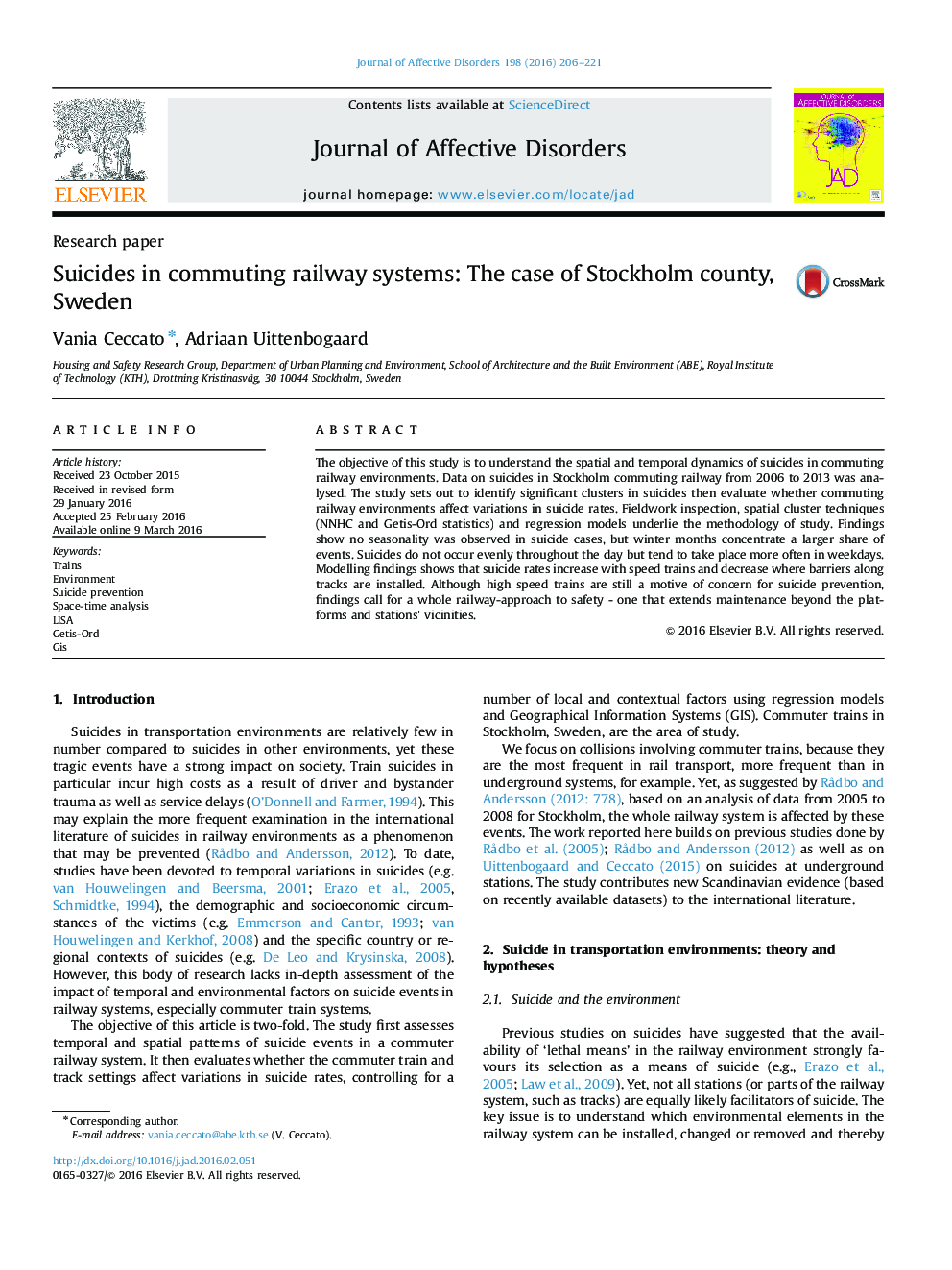| Article ID | Journal | Published Year | Pages | File Type |
|---|---|---|---|---|
| 6230222 | Journal of Affective Disorders | 2016 | 16 Pages |
â¢The study is innovative because it assesses the role of the environment for suicides in transportation environments.â¢The study contributes to the understanding of the time dimension of suicides in commuting train systems, daily, weekly and seasonally.â¢This is a study that adopts a spatial approach to suicides in transportation environments by assessing two types of clusters techniques.â¢It contributes with new Scandinavian evidence to the international literature.â¢The study follows a long tradition of this Journal in publishing research on suicides on transit environments.
The objective of this study is to understand the spatial and temporal dynamics of suicides in commuting railway environments. Data on suicides in Stockholm commuting railway from 2006 to 2013 was analysed. The study sets out to identify significant clusters in suicides then evaluate whether commuting railway environments affect variations in suicide rates. Fieldwork inspection, spatial cluster techniques (NNHC and Getis-Ord statistics) and regression models underlie the methodology of study. Findings show no seasonality was observed in suicide cases, but winter months concentrate a larger share of events. Suicides do not occur evenly throughout the day but tend to take place more often in weekdays. Modelling findings shows that suicide rates increase with speed trains and decrease where barriers along tracks are installed. Although high speed trains are still a motive of concern for suicide prevention, findings call for a whole railway-approach to safety - one that extends maintenance beyond the platforms and stations' vicinities.
